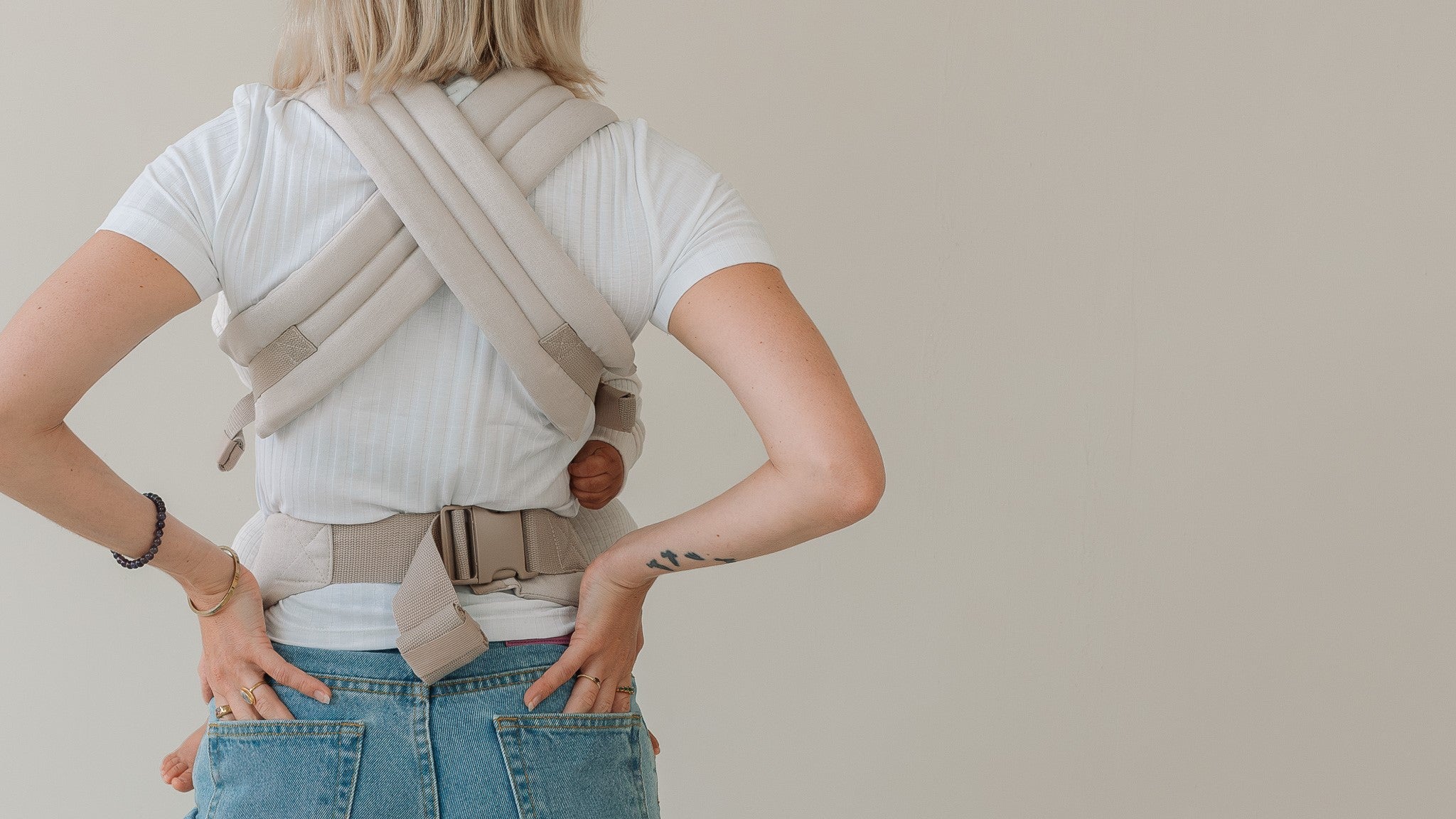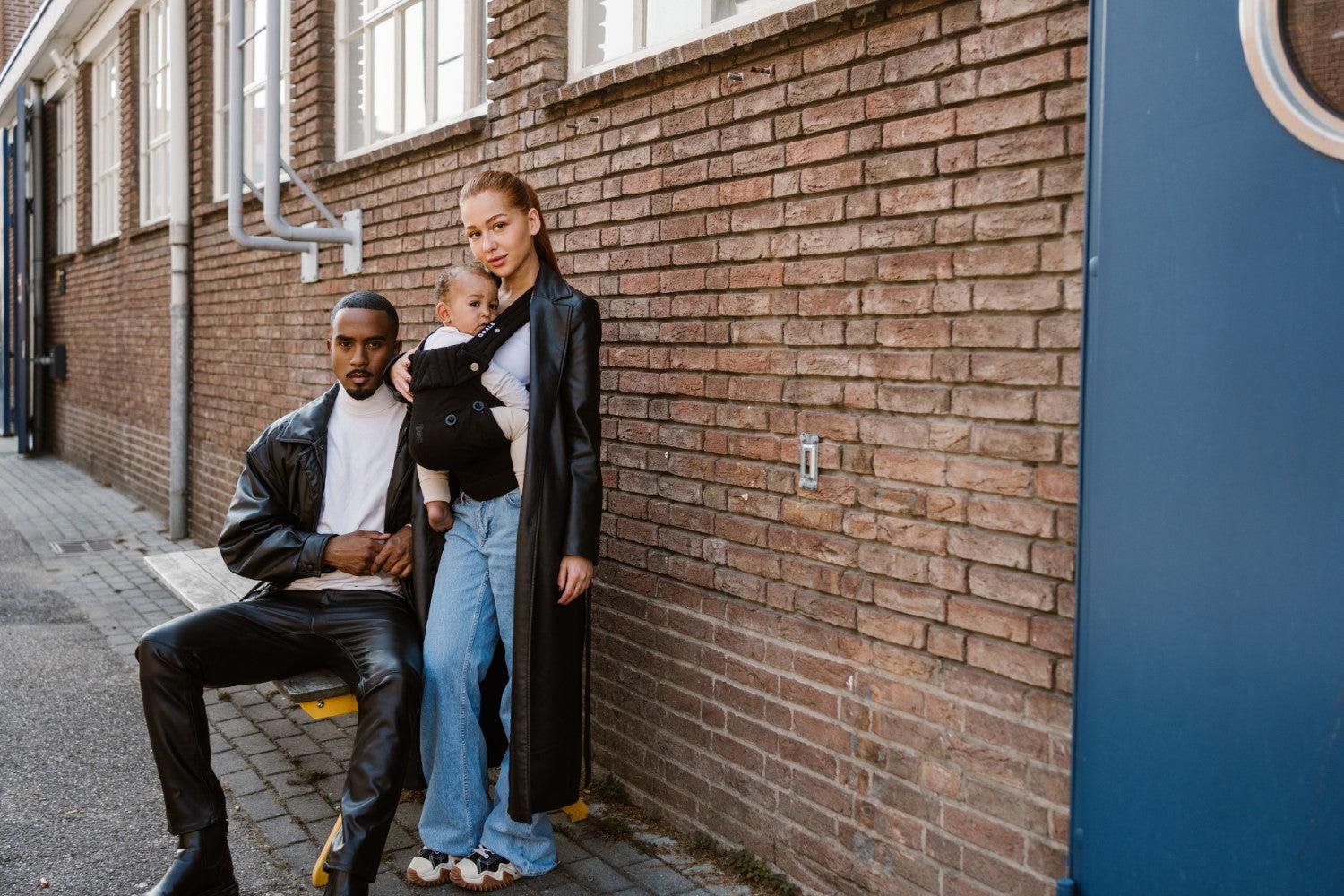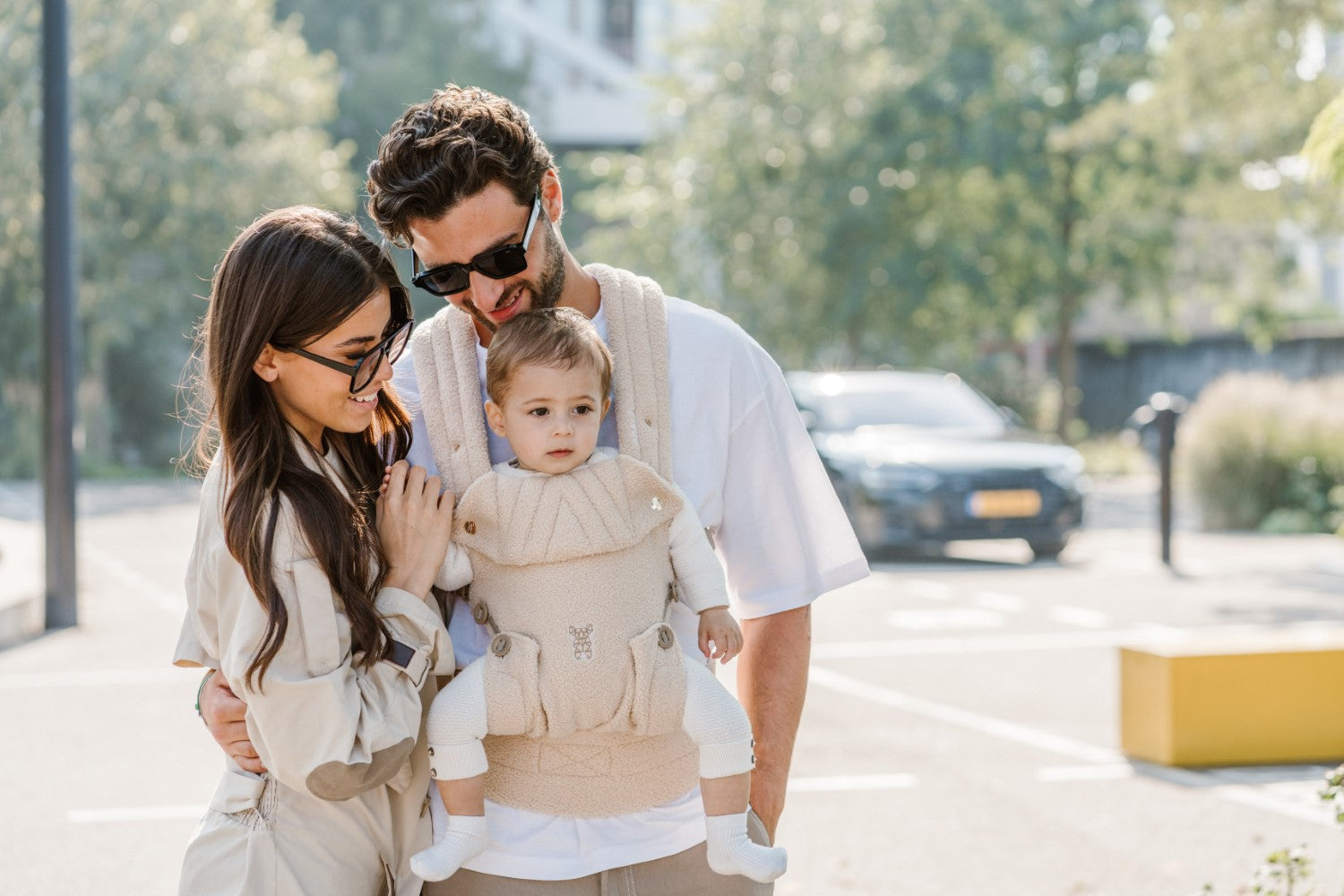Manual
The complete guide to your Solace Carrier. Learn how to use it safely and comfortably. Please read carefully before first use.
VIDEOS
Inward facing
For newborns and young babies
Use this position from birth until at least 6 months. Your baby sits safely facing inward, close to your heart, for optimal support and comfort.
Outward Facing
For curious little ones.
Suitable from around 6 months, once your baby’s neck and hips are strong enough. Allows your child to explore the world while staying close and secure.


